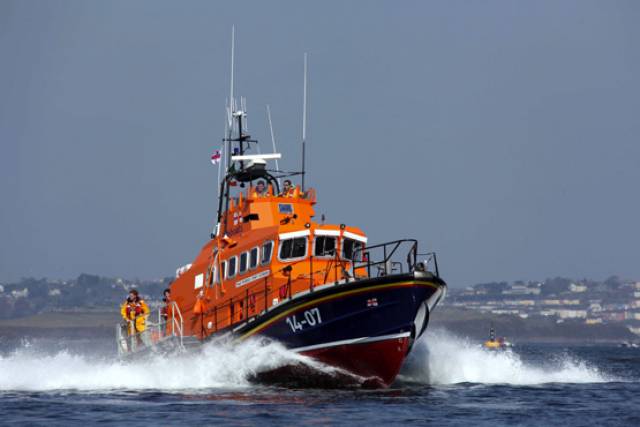Courtmacsherry RNLI was among the search and rescue agencies who responded yesterday morning (Thursday 8 August) to reports that a man had taken ill during a diving expedition to the wreck of the Lusitania.
As reported by The Irish Times, it is suspected that the diver, one of a group of eight, developed the bends as he returned to the surface from the wreck site some 18km off the Old Head of Kinsale.
The Naval Service vessel LÉ George Bernard Shaw diverted from patrol in the area and sent a team to bring the casualty on board, from where he was airlifted to hospital.
Later the casualty was transferred from Cork University Hospital to University Hospital Galway, which has a decompression unit.
As the emergency operation wound down, Courtmacsherry RNLI’s all-weather Trent class lifeboat Frederick Stormy Cockburn received another Mayday call, to a 30ft yacht in difficulty off the Seven Heads coast.
The lifeboat was at the scene within 20 minutes and proceeded to tow the stricken vessel back to the safe surrounds of Courtmacsherry Pier.
Commenting on the morning’s callouts, Courtmacsherry lifeboat operations manager Brian O'Dwyer praised all the crew for their professionalism and fast response.
Elsewhere, shortly after 1pm, Crosshaven lifeboat volunteers were called to a medical evaluation from Spike Island in Cork Harbour.
According to Crosshaven RNLI, crew member Aoife Dinan performed casualty care until paramedics arrived, having been brought to the Island by the Port of Cork RIB.
The Irish Community Air Ambulance also landed on the island along with Crosshaven Coast Guard.
“Very sadly, the male casualty, who was a foreign visitor, was declared deceased,” said press officer Jon Mathers. “Our sympathies are with the family of the deceased man; may he rest in peace.”































































